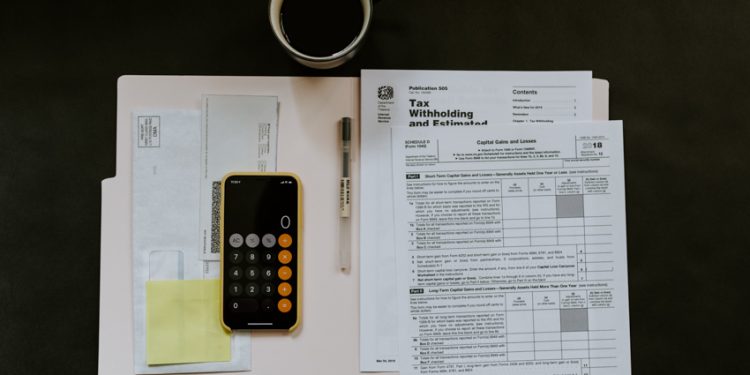Creating a Savings Plan
When the unexpected happens, it can be difficult to know where to turn. Unexpected expenses can be stressful and hard to manage, but having a plan in place to cover these costs can help you stay on track.
Creating a savings plan for unexpected expenses is an important part of financial security. When you’re starting out, it’s easy to get overwhelmed by the thought of putting money aside for the future, but it can be as simple as setting aside a small amount every month. Consider setting up an automatic transfer from your checking account to your savings account each month. This can be a great way to ensure that you’re always setting aside money for a rainy day.
You can also get creative with your savings plan. Consider utilizing an online savings tool or investment app to help you reach your goals. Many of these tools will allow you to set up a plan and track your progress over time. You can even add a ‘round up’ feature to your account, which will automatically round up your purchases to the nearest dollar and transfer that money into your savings account.
If you’re looking for an even more hands-on approach, consider setting up a ‘rainy day fund’ jar. It can be as simple as a mason jar that you keep in your home. Every time you make a purchase, take a few coins from your change and put them in the jar. It’s a great way to remind yourself to save and watch your savings grow.
No matter how you choose to save, it’s important to remember that you don’t have to save a lot of money to be prepared. Even setting aside a small amount each month can help you feel more secure in the event of an unexpected expense.
Creating a savings plan may seem like a daunting task, but it doesn’t have to be. With the right tools and a little creativity, you can create a plan that works for you and ensure that you’re always prepared for whatever life throws your way.

Understanding What Unexpected Expenses You May Face
When facing unexpected expenses, it is essential to understand what they are and how they may affect you financially. Unexpected expenses come in all shapes and sizes, from a sudden home repair to a medical emergency. Unexpected expenses can be costly and challenging for anyone to plan for, but there are steps you can take to prepare yourself for the future.
The first step in preparing for unexpected expenses is to assess your current financial situation. Look at your income, debt, and savings. Knowing these pieces of information will help you determine how much you can afford to put aside for unexpected expenses. It is important to also be aware of your monthly expenses, such as utilities, food, and rent. This will help you set a realistic budget and create a savings plan that works for you.
The next step is to determine what types of unexpected expenses you may face. Consider potential expenses such as home repairs, medical bills, travel costs, and car repairs. It is important to understand what type of events may cause you to have an unexpected expense. This will help you plan ahead and prepare for the costs associated with these events.
Once you know what types of unexpected expenses you may face, it is time to create a plan of action. Start by creating a budget that allows you to put aside a portion of your income every month to cover unexpected expenses. You can also consider setting up an emergency fund, which is a separate savings account specifically for unexpected expenses. This can provide you with an additional source of funding and help you cover unexpected expenses without dipping into your other savings.
If you are unable to set aside a portion of your income for unexpected expenses, there are other ways to save. Consider setting up automatic transfers from your checking account to your savings account. This can help you save without even thinking about it. You can also look for ways to reduce your monthly expenses, such as cutting back on unnecessary purchases and using coupons.
Finally, it is important to stay organized. Keep track of all your expenses, including those for unexpected events. This will help you identify patterns and determine what types of events are causing you to have unexpected expenses. It can also help you create a better plan for the future.
Saving for a rainy day can help you prepare for unexpected expenses and ensure that you are financially secure in the future. By understanding what types of expenses you may face, creating a budget and savings plan, and staying organized, you can ensure that you are prepared for whatever life throws your way.

Why Saving for a Rainy Day is Important
Saving for a rainy day is an important part of financial planning. Having a rainy day fund can help you weather difficult times, such as when you have an unexpected expense come up and you don’t have the cash reserves to pay it. It’s especially important to save if you don’t have a steady income or if you’re living paycheck to paycheck.
Without a rainy day fund, you may have to borrow money or dip into your savings, both of which can have long-term consequences. Having a rainy day fund will help you stay afloat if you lose your job or have an emergency come up. It’s important to have some money put away so that you can cover any unexpected expenses without having to worry about where the money will come from.
Saving for a rainy day is also a great way to give yourself peace of mind. Knowing that you have a reserve of money to cover unexpected expenses can make you feel more secure about your financial future. It can also give you the confidence to take risks in your career or invest in other areas because you know that you will have a safety net should anything go wrong.
It’s important to remember that saving for a rainy day is a long-term strategy. You should start saving early and set aside a set amount of money each month in order to build up a rainy day fund. It’s also important to have a plan in place so that you know how you will use the money should an unexpected expense come up.
Creating a budget is a great way to help you save for a rainy day. A budget will help you track your spending and ensure that you are allocating a certain amount of money each month to your rainy day fund. It’s also important to have an emergency fund separate from your other savings so that you can access it quickly in the event of a financial crisis.
Saving for a rainy day can be difficult, but it’s an essential part of financial planning. Having a rainy day fund can give you the security and peace of mind needed to make informed decisions about your future. By setting aside money each month and having a plan in place to use it, you can feel confident that you will be able to handle any unexpected expenses that come your way.

Setting Up Automatic Transfers
Setting up automatic transfers is an effective and easy way to save for a rainy day. The beauty of automatic transfers is that you can set them up once and forget about it. This means that you don’t have to worry about manually transferring money each month, or worse, forgetting to set aside money for an emergency fund.
To set up an automatic transfer, you’ll need to first decide how much you want to set aside each month. It’s a good idea to start small if you’re just getting started with saving money, as a few dollars per month can quickly add up. Once you’ve decided on an amount, you can contact your bank and set up the transfer. Most banks allow you to easily set up an automatic transfer from one of your accounts to another, and you can even choose the date and frequency of the transfer.
If you’re not sure how much to set aside each month, you can also use an online budgeting tool or a smartphone app to help you track your spending and set up a budget. These tools can help you identify areas where you can save money, and you can use this information to decide how much you should set aside each month.
It’s important to remember that setting up an automatic transfer is just the first step. You’ll also need to make sure that you’re actually putting away the money that you plan to save. To do this, you can set up reminders, such as an email or text message, to remind yourself to check your savings account each month. This will help you stay on track and ensure that you’re saving the money you need for unexpected expenses.
Another way to stay on top of your saving goals is to set up a rewards system. For example, you can set up a reward for yourself each time you reach a certain milestone. For example, you could reward yourself with a new book, a movie night, or a night out with friends every time your emergency fund reaches a certain amount. This will help to motivate you to keep saving and to stay on track with your rainy day savings plan.
Saving for a rainy day can seem daunting, but setting up automatic transfers is an easy way to get started. Automating your savings will help you reach your goals faster and ensure that you have the money you need in case of an emergency. So, if you want to ensure that you’re prepared for the unexpected, setting up an automatic transfer is the perfect way to get started.
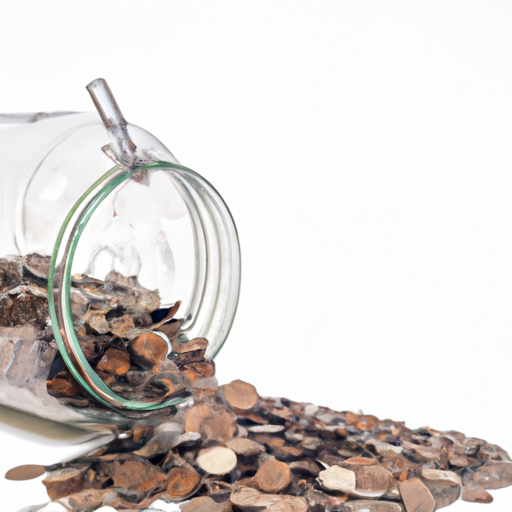
Building a Contingency Fund
Financial security is a desired goal for many people, but it can be hard to achieve. One of the best ways to protect yourself from unexpected expenses is to build a contingency fund. A contingency fund is a savings account, usually separate from your regular savings, that is specifically set aside for emergencies. It is not strictly a rainy day fund, but rather a way to cover unexpected expenses that might arise.
When it comes to building a contingency fund, there are a few things you should keep in mind. First, determine how much you need to set aside. Your fund should be large enough to cover any potential emergency expenses. It is important to remember that this fund is not intended to cover your everyday expenses, so you should not plan to use it to pay the bills.
Next, decide how you will save for your contingency fund. You may want to set up a separate savings account, or you may prefer to keep everything in one account. In either case, you should check with your bank to determine the best interest rate for your money. Additionally, you should set up an automatic transfer from your checking to your savings so that you are putting money away each month without having to think about it.
It is also a good idea to determine how you will use the money from your contingency fund. You may want to use it to pay for medical expenses, car repairs, or home improvements. Whatever you decide, make sure you only use it in case of an emergency. If you use it for something else, you may find yourself in a difficult financial situation.
Finally, remember to review your contingency fund periodically. Make sure your savings account is up to date and that you have enough money saved to cover any unexpected expenses that may arise. You may also want to consider increasing your contribution to the fund each year to ensure that you are adequately covered.
Building a contingency fund is a great way to prepare for unexpected expenses. With careful planning and consistent saving, you can make sure that you are financially secure and prepared for whatever life throws your way.
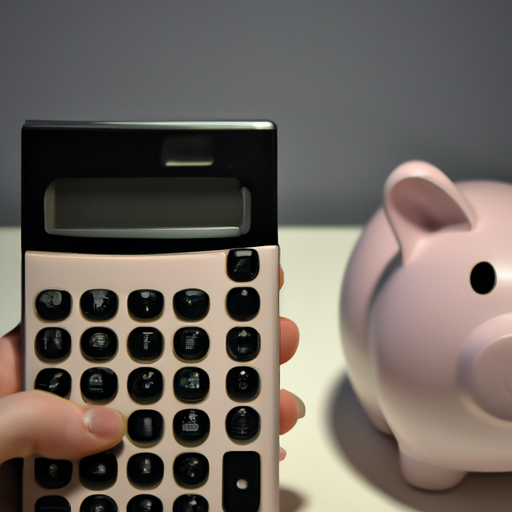
Maximizing Your Savings
When it comes to saving for a rainy day, there are many strategies you can employ to maximize your savings and ensure you have enough to cover unexpected expenses. The first step to maximizing your savings is to create a budget. Budgeting helps you to track your income and expenses, allowing you to make informed decisions about where to allocate your funds. Once you have a budget in place, you can begin setting aside a portion of your income for savings each month. This can be done by setting up an automatic transfer from your checking account to a savings account on a weekly or monthly basis.
You can also look for ways to cut back on your spending to free up more money for savings. This may involve reevaluating your monthly subscription services, such as streaming services and monthly boxes, and determining if they’re worth the cost. You may also want to reassess your shopping habits and find ways to save money on everyday purchases, such as buying store brands and utilizing coupons.
In addition, it’s important to create an emergency fund. This fund should be used exclusively for unexpected expenses, such as car repairs or medical bills. You can start this fund by setting aside a certain amount of money each month, such as 5-10% of your income. You can also look into investing in high-yield savings accounts to maximize your earnings.
Another way to maximize your savings is to take advantage of tax incentives. If you’re able to contribute to a 401(k) or IRA, you’ll be able to reduce your taxable income while still saving for retirement. There are also other tax-advantaged accounts, such as health savings accounts, that can help you save for medical costs.
Finally, you should also consider taking advantage of other benefits available to you, such as employee benefits or discounts from your employer. Many employers offer employee discounts and incentives that can help you save money, such as discounts for gym memberships or insurance. Taking advantage of these benefits can help you maximize your savings and ensure that you’re prepared for unexpected expenses.
Saving for a rainy day is essential for any household. By taking the time to create a budget, set up automatic transfers, cut back on spending, and take advantage of tax incentives and employee benefits, you can maximize your savings and ensure that you have enough money to cover any unexpected expenses. With the right plan in place, you’ll be able to weather any storm.
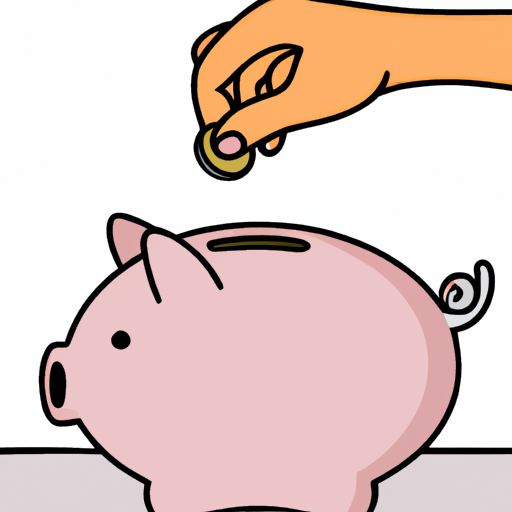
Finding Extra Sources of Income
Saving for a rainy day is one of the most important financial planning strategies you can adopt. You never know when an unexpected expense may arise, so having a cushion of funds available to help you cope with it can be a lifesaver. But how do you plan for those unexpected expenses? One way to help prepare for the unknown is to find extra sources of income.
Finding extra sources of income can be as simple as taking on an extra part-time job or side hustle. If you’re already employed, you could look for ways to increase your earnings. You could ask for a raise, start working overtime, or pursue a promotion. In the gig economy, there are plenty of opportunities to make money on the side. You could drive for a rideshare company, sell items on eBay, tutor students, or become a virtual assistant.
You could also look into passive income streams. Passive income is income that comes in without you actively working for it. Investing in stocks and bonds, purchasing rental properties, or creating a blog or YouTube channel are all great ways to earn passive income. If you’re willing to invest some time and money upfront, you could potentially enjoy a steady stream of income.
If you’re not sure where to start, you could consider enlisting the help of a financial advisor. A financial advisor can help you create a personalized financial plan that incorporates your short-term and long-term goals. They can help you identify investment opportunities, provide advice on how to manage your debt, and help you create a budget that works for you.
When it comes to saving for a rainy day, finding extra sources of income can be a great way to help create a financial cushion. Whether you’re looking for ways to increase your current earnings or pursue passive income streams, there are plenty of options available. With the right plan and a bit of perseverance, you can create a financial strategy that will help you save for the future.
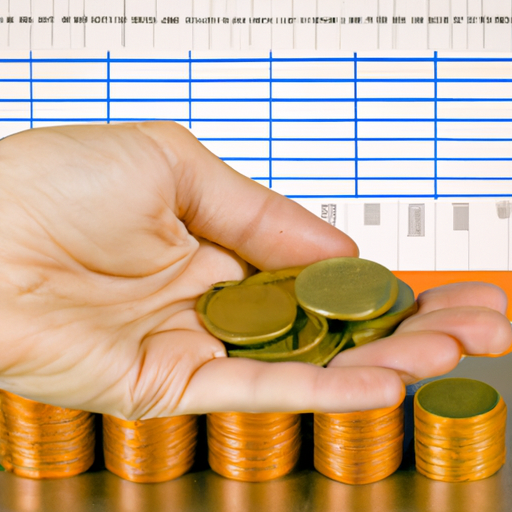
Making Smarter Financial Choices
Making smarter financial choices is key to successful saving for a rainy day. After all, if you don’t have the money set aside for unexpected expenses, you won’t be able to take advantage of the opportunities that come up. That’s why it’s important to be mindful of the decisions you make and the way you use your money.
One of the best ways to make smarter financial decisions is by creating a budget. Start by tracking your income and expenses for the month. This will give you a good idea of where your money is going, and where you can cut back if need be. You can also set financial goals – such as how much you want to save each month or how much you want to pay off in debt. Having these goals will make it easier to stay on track and keep your finances in check.
Another way to make smarter financial decisions is to stick to a cash-only system. This means that instead of swiping your credit card for purchases, you only use cash. This will help you stay within your budget and keep you from overspending. When you pay with cash, you can also keep better track of your spending habits.
In addition, it’s important to think before you buy. Ask yourself if a purchase is really necessary and if it fits into your budget. If the answer is no, then it’s probably best to wait until you can afford it. Shopping around for the best deals and taking advantage of discounts can also help you save money.
Finally, creating an emergency fund is a great way to save for a rainy day. An emergency fund is money set aside for unexpected expenses. This can include anything from medical bills to car repairs to home repairs. It’s important to have enough money saved up to cover these expenses if they arise.
Making smarter financial choices is the key to successful saving for a rainy day. By creating a budget, sticking to a cash-only system, thinking before you buy, and setting up an emergency fund, you’ll be well on your way to staying ahead of the curve when it comes to unexpected expenses.

Utilizing Financial Tools and Resources
When it comes to saving for a rainy day, there are many financial tools and resources available to help you plan for unexpected expenses. Whether you’re just starting to save or are already an experienced saver, these tools can give you the guidance you need to stay on top of your financial goals.
One of the most popular financial tools is budgeting. Budgeting can help you get a better handle on your finances and plan for unexpected expenses. It’s important to create a budget that works for you and your lifestyle. That way, you can set aside money for unexpected expenses while still having enough to cover your day-to-day needs. Many websites and apps are available to help you track your budget and stick to it.
Another great financial resource is credit counseling. Credit counseling is a great way to learn more about credit and managing debt. A credit counselor can provide personalized advice and guidance on how to manage your debt, create a budget, and save for the future. They can also help you understand your credit report and credit score, which can be a great way to identify areas for improvement.
Investing is another way to prepare for unexpected expenses. Investing can help you grow your money over time, allowing you to build a financial cushion for unexpected expenses. Before investing, it’s important to educate yourself and understand the risks associated with different types of investments. Investing can be a great way to build wealth, but it’s important to understand the risks and how to manage them.
Finally, don’t forget about insurance. Insurance can help protect you from unexpected expenses such as medical bills or damage to your home. Different types of insurance may be right for you, depending on your needs and budget. Shopping around and comparing different policies can help you find the right insurance coverage at a price you can afford.
No matter what financial tools and resources you use, it’s important to have a plan for saving for a rainy day. Budgeting, credit counseling, investing, and insurance are just a few of the tools that can help you prepare for unexpected expenses. With the right plan and a little bit of discipline, you can be well on your way to a financial cushion that will help you weather any storm.

